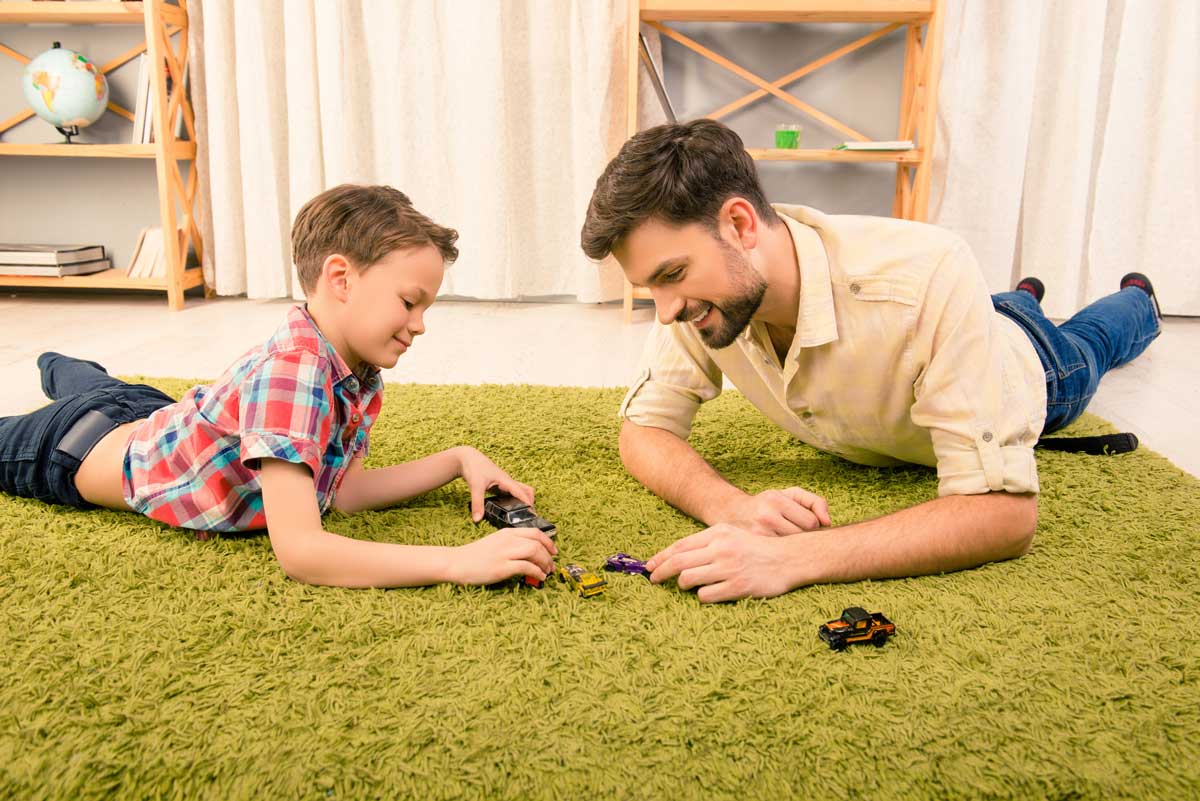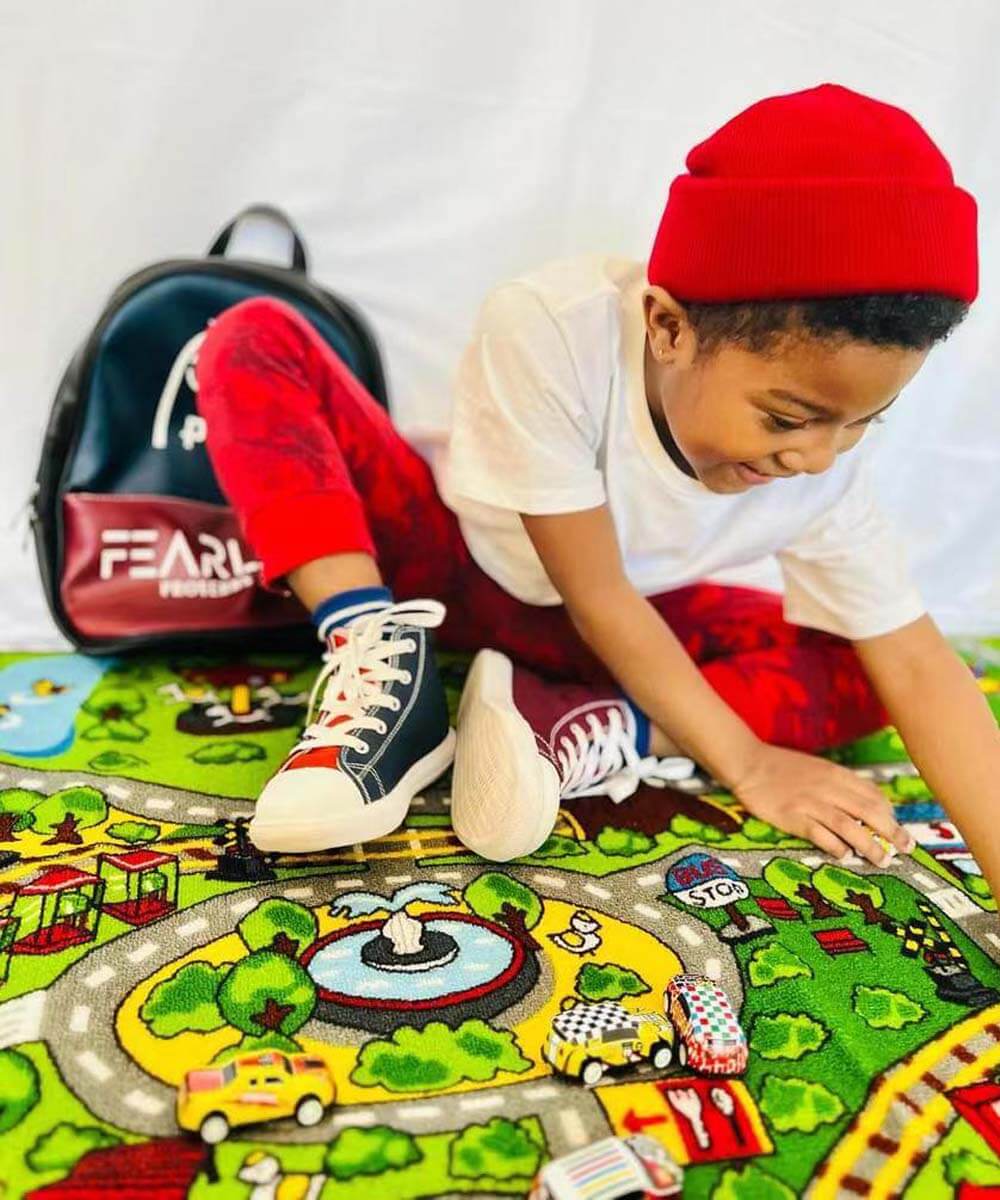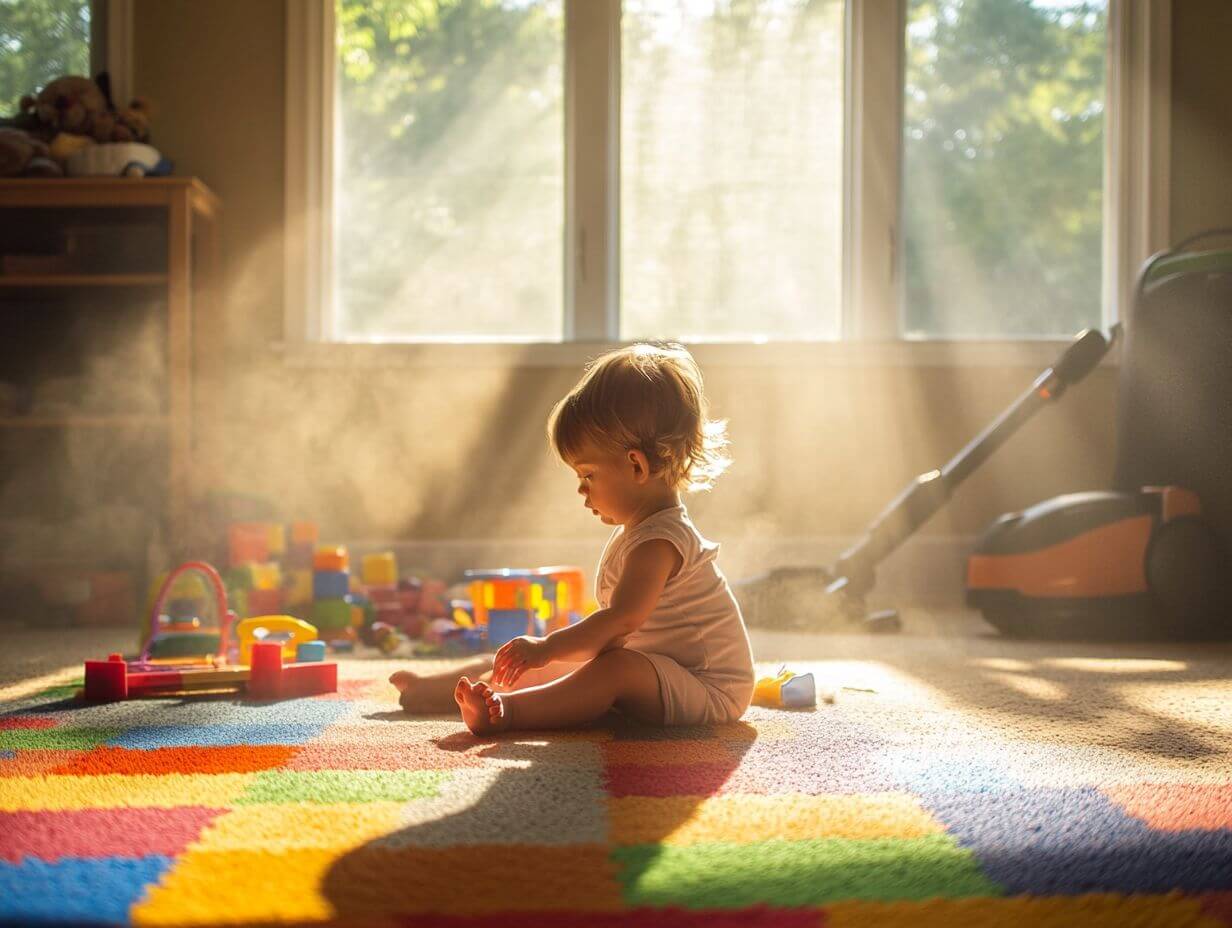G'day, dream-weavers and childhood magic-makers! Remember when a simple bedsheet could transform your dining table into a secret cave? Or when that patch of backyard became a fairy kingdom complete with invisible castle walls? Those weren't just silly games—they were powerful moments of imagination that shaped your developing brain. And today, we're diving into how the right children's play rug can become the canvas for your little one's most magnificent mental adventures!
The Secret Superpower of Childhood Imagination
Before we roll out the perfect rug for your ankle-biter's adventures, let's chat about why imaginative play matters more than you might think.
"Imagination isn't just cute—it's critical," explains Brisbane child development expert Dr. Sam Taylor. "When children engage in fantasy play, they're actually building neural pathways that support problem-solving, emotional regulation, and social skills. They're literally constructing their future adult brains through play."
In a world where screens often dominate childhood entertainment, creating physical spaces that spark imagination has become more important than ever. And that's where the humble rug enters our story—not just as floor covering, but as magic portal to other worlds!
Why Rugs Make the Perfect Imagination Stations
Unlike bulky play structures that dominate your living space or digital games that limit sensory experiences, a well-chosen fantasy-themed rug offers the perfect balance:
- Defined space that signals "this is where magic happens"
- Visual prompts that kickstart storytelling
- Comfortable surface for hours of play
- Easy storage (because it's just...there on your floor!)
- Multiple play possibilities that evolve with your child
"My daughter's fairytale castle rug has been everything from an enchanted forest to a underwater kingdom," shares Melbourne mum Jasmine Patel. "Some days the castle towers are volcanoes, other days they're rocket ships. The limit is literally just her imagination, and let me tell you—there aren't many limits there!"
Creating Magical Worlds One Rug at a Time
For the Tiny Explorers (Ages 1-3)
At this age, imagination is just budding, but sensory experiences are everything. Look for:
- Texture-rich rugs with different tactile elements to explore
- Simple animal designs that they can identify and make sounds for
- Basic road layouts for first car play experiences
"My toddler's sensory rug has become our morning ritual," explains Sydney dad Tom Chen. "We start the day with 'walking' his little fingers across different textures while making up silly stories about where finger-person is going. It sounds dead simple, but his face lights up every single time!"
For the Story Creators (Ages 4-6)
This is prime imaginative play time, when stories become complex and imaginary friends might join the family. Consider:
- Village or city layout rugs that create miniature worlds
- Fantasy landscapes with castles, forests, or oceans
- Space-themed designs for intergalactic adventures
Perth mother of twins Maria Gonzales couldn't believe the difference a rug made: "We invested in a magical kingdom rug with forests, mountains, and castles. The change was immediate—our previously screen-obsessed five-year-olds started creating elaborate stories with their toys. Last week they spent THREE HOURS on a 'rescue mission' to save their teddy from a dragon. Best money I've ever spent!"
For the World Builders (Ages 7-10)
Older children develop more sophisticated imaginative play with rules, systems, and detailed narratives. Their ideal rugs include:
- World map designs for global adventures and learning
- Activity rugs with game elements built in
- Versatile geometric patterns that can be reinterpreted for different scenarios
"My nine-year-old son and his mates have turned our ancient civilization rug into an ongoing saga that's part history lesson, part fantasy epic," laughs Brisbane father Jake Williams. "They've created their own civilizations, trading systems, and even languages. Sometimes I'll overhear them debating the 'historical accuracy' of their made-up worlds and think—crikey, are these really the same kids who can't remember to put their shoes away?"
Bringing the Magic: How to Amplify Your Rug's Imagination Potential
The right rug is just the beginning. Here's how clever parents are creating total imagination ecosystems:
The Prop Box Revolution
"Each of our themed rugs has a matching prop box," explains Adelaide mother of three Olivia Chen. "For the ocean adventure rug, we have a basket with shells, blue scarves, toy fish, and boat figurines. The farm rug has a different basket with toy animals and tractors. This simple system means the kids can grab everything they need for deep imaginative play without tearing apart the whole house."
The Storytelling Starter Jar
Tasmania-based kindergarten teacher Emma Thompson suggests creating story starter prompts: "Write different scenarios on popsicle sticks in a jar next to the play rug. When imagination needs a boost, pull out a stick: 'Oh no! A storm is coming to the village!' or 'Look! Visitors from another planet have arrived!' Then watch their creativity explode."
The Voice-Changer Magic
"My secret weapon is a simple voice changer toy," confides Gold Coast father Tim O'Leary. "When my daughter's fairy garden rug play needs fresh energy, I'll grab the voice changer and suddenly become the dragon/wizard/talking tree. Works like a charm every time!"
Let Them Lead: Why Child-Directed Imagination Matters Most
While it's tempting to orchestrate elaborate scenarios or correct your child's imaginative "errors" (that's not how dinosaurs behaved!), experts emphasize the importance of letting children lead their own imaginative play.
"Parents often feel they need to direct the play experience, but the developmental benefits are greatest when children navigate their own imaginative journeys," advises early childhood specialist Dr. Maya Phillips from Melbourne University. "Your job is to create the environment and then—this is the hard part—step back and let the magic happen."
This doesn't mean abandoning them to play alone. The most meaningful imaginative play often happens when parents participate as equals in the child's created world.
"My most precious parenting moments happen on our adventure rug," shares Canberra mother Sophie Jackson. "When I truly surrender to my daughter's imagination and let her direct our play, I get this incredible window into how she sees the world. Last week I was a baby mermaid who needed to learn how to swim—and she was the patient teacher showing me how. The role reversal was fascinating, and I realized she was processing how I teach her new skills."
Beyond Entertainment: The Serious Benefits of Rug-Based Imagination
While these magical play moments are undeniably adorable, they're also building crucial skills:
The Language Explosion
Researchers have found that children use more sophisticated vocabulary and complex sentence structures during pretend play than in ordinary conversation.
"I was blown away when my typically quiet four-year-old suddenly declared that his knight was 'embarking on a perilous journey across treacherous mountains' on his medieval rug," shares Sydney father Michael Chen. "Where did he even learn those words? His everyday conversation is nowhere near that sophisticated!"
The Empathy Builder
When children imagine themselves as different characters, they're actually developing critical perspective-taking abilities.
Queensland child psychologist Anita Sharma explains: "When a child pretends to be the dragon, then the knight, then the villager affected by both, they're practicing understanding different viewpoints—the foundation of empathy."
The Confidence Booster
In imaginative play, children are in complete control—often a rarity in their rule-filled lives.
"My daughter is quite shy at preschool," shares Perth mother Jessica Wilson, "but on her enchanted forest rug, she becomes this confident fairy queen who commands armies and solves kingdom problems. I can actually see her practicing being assertive and powerful, and that confidence is slowly extending into her real-world interactions."
Real Magic: Australian Families Share Their Rug Transformation Stories
The Rainy Day Miracle
"We were facing eight straight days of rain during school holidays in our small apartment," recounts Melbourne father Steve Thompson. "In desperation, I ordered a pirate adventure rug. It arrived on day two of the downpour, and I swear it saved our sanity. The kids created an entire pirate society with trading posts, treasure maps, and sea monster territories. They played on that rug for hours every day, and not once did I hear 'I'm bored' or see them reach for the iPad."
The Sibling Bond Builder
Adelaide mother of three Jana Patel found an unexpected benefit: "My kids have significant age gaps—3, 7, and 10 years old. Finding activities they all enjoy seemed impossible until we got our fantasy world rug. Something about that rug levels the playing field. My oldest creates elaborate story worlds, my middle child adds dramatic characters, and even the toddler participates by moving figures around. It's become their special bonding time."
The Pandemic Sanity Saver
"During lockdowns, our space exploration rug became our family's escape pod," shares Brisbane father of twins Alex Chen. "When we couldn't physically go anywhere, the kids would announce 'Today we're visiting Mars!' or 'We're exploring a new galaxy!' That rug gave us the adventures we couldn't have in the real world."
The FOMO Factor: Why Today's Kids Need Imagination More Than Ever
In our hyper-scheduled, achievement-oriented modern childhood landscape, unstructured imaginative play often gets squeezed out. Yet developmental experts are raising alarm bells about this trend.
"We're seeing concerning decreases in creativity, problem-solving abilities, and emotional resilience in children who lack sufficient imaginative play experiences," warns Dr. Thomas Lee, child development researcher at Sydney University. "These aren't just nice-to-have skills—they're fundamental to success in our increasingly complex world."
The good news? Simple environmental changes—like adding an imagination-sparking themed play rug—can significantly increase the quality and quantity of a child's creative play.
Creating Your Magical Rug Space: Practical Tips
Ready to create your own imagination station? Here's how to make the most of your space:
- Location matters: Position the rug in a space where play can remain undisturbed for periods of time
- Clear the decks: Reduce surrounding visual clutter so the rug's design can spark imagination
- Consider lighting: Natural light is ideal, but warm lamps create a magical atmosphere for evening play
- Add simple props: A basket of versatile toys nearby (blocks, figures, scarves) amplifies play potential
- Set boundaries: If the rug is in a common area, establish family rules about when it's okay to leave an imaginative world "in progress" until later
The Last Word: Small Investment, Infinite Returns
In a world where parents often feel pressured to provide elaborate experiences and expensive opportunities, there's something wonderfully refreshing about the humble play rug's power to spark joy and development.
As Gold Coast early childhood educator Mia Johnson puts it: "I've worked with children for 25 years, and I've come to believe that what they need most isn't more activities or more stimulation—it's more space and permission to explore their own magnificent minds. A simple rug can define that space in both practical and psychological ways."
So whether you choose a magical kingdom, underwater world, or space adventure, know that you're not just buying floor decor—you're investing in your child's cognitive, emotional, and social development.
And perhaps most importantly, you're creating a dedicated space where childhood's most precious resource—pure, unbounded imagination—can flourish. In a complicated world, that might be the greatest gift of all.
After all, today they're just tiny feet standing on a magical rug. But tomorrow, those same feet might walk on Mars, save endangered species, or create works of art that move millions—all because their minds learned to soar beyond boundaries, one imaginative adventure at a time.








Leave a comment
This site is protected by hCaptcha and the hCaptcha Privacy Policy and Terms of Service apply.